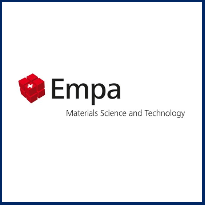CUSTOMER TESTIMONIALS

G. Mohanty
Tampere University of Technology
“My research relies heavily on the Alemnis in-situ nanoindenter. It is a versatile, modular, easy-to-use and, most importantly, robust instrument that enables designing and performing any kind of mechanical tests. Its greatest strength, in comparison to other nanoindenters, is that it is inherently displacement controlled which makes it extremely easy to perform strain rate jump, stress relaxation and fracture tests. I have found the Alemnis nanoindenter to be very reliable and adaptable to different working environments – whether it be inside a SEM, under a light microscopes or even at a synchrotron beamline! And special mention of the Alemnis team that is always available for support, stimulating discussions and collaborations.”

J. M. Wheeler
ETH Zürich
“We use our Alemnis for nearly every kind of micromechanical test. The simple, robust design lets us easily customize it for nearly any sample or test geometry and makes it impervious to heavy student use. It just works.”

J. Schwiedrzik
EMPA Thun
“The flexibility of the Alemnis system both inside (in-situ) and outside (ex-situ) the SEM has allowed us to widen the scope of our research enormously. In particular, the ability to make ex-situ tests on hydrated biomaterials (in the liquid cell) in both compression and tension, as well as in-situ tests at low temperatures (with the LTM-CRYO) has provided significant new data for this class of materials.”

Joey Kabel
University of California, Berkeley
“My research focuses on ceramic interfaces of fibre composites and thin films. The in-situ Alemnis Standard Assembly (ASA) has opened the doors to unique crack growth characterization as well as specialized friction and wear techniques. The true displacement control, lateral stiffness, and the “plug and play” versatility of the hardware (including scratch stage and SmarTip) are just a few of the enabling factors that have provided outstanding results.”

P. Spätig
Paul Scherrer Institute
“The in-situ Alemnis indenter is a reliable, very flexible, and easy-to-use micro-mechanical test device. Thanks to the professionalism of the Alemnis team you get started with the instrument in no time. Support, direct discussion and help are the great assets of Alemnis.”

Y. Chiu
University of Birmingham
“The Alemnis system is important to our research. The advantage of being a true displacement controlled system enables us to study conveniently the mechanical response, under prescribed strain rates, of a range of structural engineering alloys from nickel-base alloys, new titanium alloys and steels developed by our industry partners. The continuous professional support from the Alemnis team has been greatly appreciated.”

X. Maeder
EMPA Thun
“The compact design of the Alemnis system has enabled us to develop specific in-situ micro-cantilever bending experiments coupled with direct EBSD analysis. This is a far superior arrangement as the EBSD analysis can be done immediately without having to “flip” the sample as on other less-dedicated experimental setups. This saves time, preserves the test location and allows more useful data to be generated…”

Gonzalo García Luna
University of Nottingham
“The Alemnis nanoindenter is an outstandingly versatile yet robust device for all types of micromechanical testing. Particularly important for my research are the precise positioning and movement controls for in-situ nano-scratching which allow for a real-time correlation of events in recorded data with SEM images in order to gain knowledge and understanding on the effect of the material microstructure in dynamic processes. Moreover, the excellent team of professionals behind the device is always available for support and well-informed discussions on potential applications. Without the Alemnis nanoindenter we simply could not undertake research of such high quality as we currently do.”

Gaylord Guillonneau
Ecole Centrale de Lyon
“The Alemnis in-situ indenter is a robust and versatile device. We have used it extensively for micropillar compression and indentation on tribological transformed surfaces, at ambient temperature and at high temperature. The strong advantage of the device is that it is displacement controlled, allowing mechanical tests on fragile materials, without destroying the micropillar. It is also, with the Ultra High Strain Rate (UHSR) module, very rigid and allows us to measure the mechanical properties of our materials up to 10,000/s strain rate.”

Magnus Colliander
Chalmers University of Technology
“We use the Alemnis in-situ nano-indenter for a variety of micro-mechanical testing applications. Beside the frequent use in electron microscopes, we have integrated the indenter at the NanoMAX beamline at the MAX IV synchrotron, where it is used for in-situ strain mapping with a hard X-ray nano-probe. The excellent long term stability of the system allows us to perform spatially resolved diffraction with sub 100 nm resolution, and through the help and openness of Alemnis support it has been integrated into the beamline control system. The indenter is both robust and easy to set up, which lets us move it between the synchrotron beamline and SEMs for correlative tests or pre-beamtime characterization.”

Siddhartha Pathak
University of Nevada, Reno
“Our research group utilizes the Alemnis indenter system regularly, particularly for micro-mechanical testing under extremes of high strain rate and high/low temperatures. Our projects span a wide range of material systems and applications, such as mechanistic design of multi-layered composites, for both biological, structural and functional applications. The versatility of the Alemnis system is a big advantage for our experiments.
I also utilize the Alemnis system heavily in my courses. Our 2018-19 senior design team was recently awarded the Second Prize in the 2019 ASM Foundation Design Competition for a micro-tensile grip design based on the Alemnis system.”












